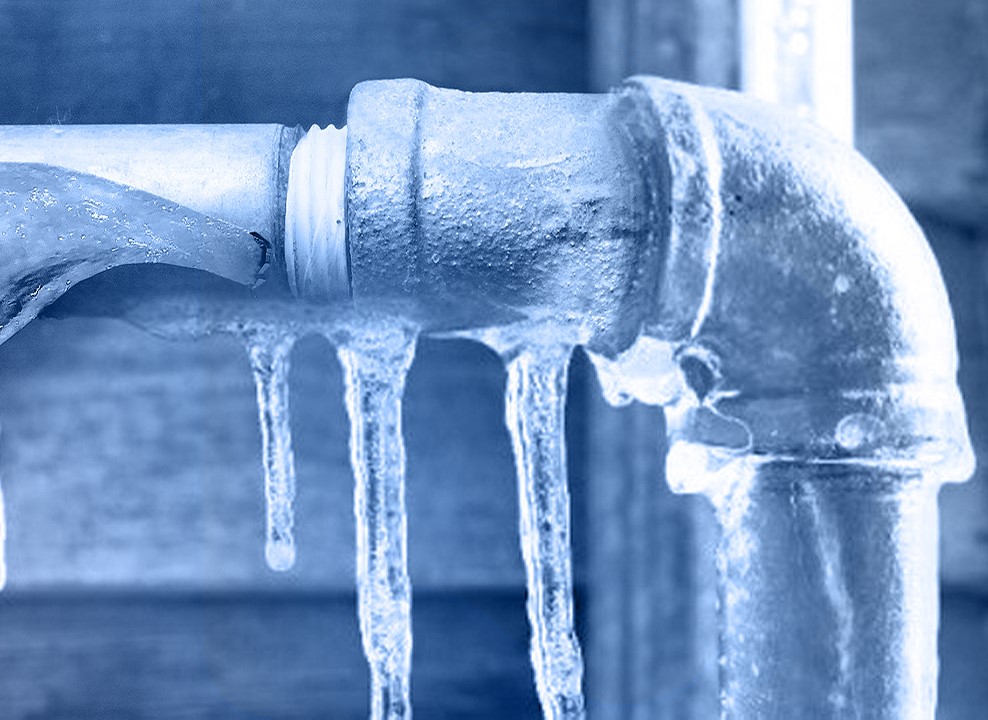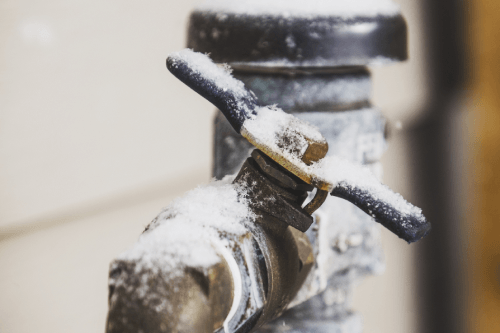Essential Tips to Prevent Frozen Pipes in Winter
Essential Tips to Prevent Frozen Pipes in Winter
Blog Article
They are making a few good pointers on the subject of 6 Ways to Prevent Frozen Pipes overall in this great article just below.

Cold weather can damage your plumbing, specifically by freezing pipes. Right here's how to avoid it from occurring and what to do if it does.
Introduction
As temperature levels decrease, the danger of icy pipes boosts, possibly causing pricey repair services and water damages. Understanding exactly how to prevent frozen pipelines is vital for house owners in cold environments.
Prevention Tips
Shielding vulnerable pipelines
Cover pipes in insulation sleeves or use heat tape to safeguard them from freezing temperatures. Concentrate on pipes in unheated or external areas of the home.
Heating methods
Maintain interior spaces sufficiently warmed, particularly locations with pipes. Open up cabinet doors to permit cozy air to circulate around pipelines under sinks.
Just how to determine icy pipes
Seek decreased water circulation from taps, uncommon smells or sounds from pipelines, and visible frost on exposed pipes.
Long-Term Solutions
Structural modifications
Think about rerouting pipes away from outside walls or unheated areas. Add additional insulation to attics, basements, and crawl spaces.
Updating insulation
Purchase top notch insulation for pipes, attics, and wall surfaces. Correct insulation helps keep regular temperature levels and lowers the threat of frozen pipelines.
Safeguarding Exterior Plumbing
Yard tubes and outside taps
Detach and drain pipes yard pipes before winter. Mount frost-proof spigots or cover outside faucets with shielded caps.
Comprehending Frozen Pipes
What creates pipelines to freeze?
Pipes freeze when exposed to temperatures below 32 ° F (0 ° C) for expanded durations. As water inside the pipes ices up, it expands, taxing the pipe wall surfaces and potentially causing them to break.
Threats and problems
Frozen pipelines can lead to water system interruptions, home damages, and pricey repair work. Ruptured pipes can flooding homes and trigger substantial architectural damage.
Indicators of Frozen Water Lines
Determining frozen pipes early can prevent them from breaking.
What to Do If Your Pipes Freeze
Immediate actions to take
If you think icy pipelines, maintain faucets open up to alleviate pressure as the ice melts. Make use of a hairdryer or towels taken in hot water to thaw pipelines gradually.
Final thought
Avoiding frozen pipelines calls for aggressive procedures and quick reactions. By understanding the causes, signs, and preventive measures, home owners can secure their pipes during winter.
6 Proven Ways to Prevent Frozen Pipes and Protect Your Home
Disconnect and Drain Garden Hoses
Before winter arrives, start by disconnecting your garden hoses and draining any remaining water. Close the shut-off valves that supply outdoor hose bibs and leave the outdoor faucet open to allow any residual water to drain. For extra protection, consider using faucet covers throughout the colder months. It’s also important to drain water from any sprinkler supply lines following the manufacturer’s directions.
Insulate Exposed Pipes
Insulating your pipes is an effective way to prevent freezing. Pipe insulation is readily available at home improvement stores and is relatively inexpensive. Pay close attention to pipes in unheated areas such as the attic, basement, crawl spaces, or garage. Apply foam insulation generously to create a buffer against the cold. You can also wrap your pipes in heat tape or thermostat-controlled heat cables for added warmth.
Seal Air Leaks
Inspect your home for any cracks or openings that could let in cold air. Seal any holes around the piping in interior or exterior walls, as well as the sill plates where your home rests on its foundation. Additionally, make sure to keep your garage door closed unless you’re entering or exiting. Leaving it open creates a significant air leak that can lead to frozen pipes.
Allow Warm Air Circulation
During cold snaps, it’s essential to allow warm air to circulate evenly throughout your home. Leave interior doors ajar to promote better airflow. Open kitchen and bathroom cabinets to help distribute heat consistently around the rooms. If you have small children or pets, be sure to remove any household chemicals or potentially harmful cleaners from open cabinets for safety.
Let Faucets Drip
A small trickle of water can make a big difference in preventing ice formation inside your pipes. When temperatures drop significantly, start a drip of water from all faucets served by exposed pipes. This continuous flow helps prevent the water from freezing. Additionally, running a few faucets slightly can relieve pressure inside the pipes, reducing the chances of a rupture if the water inside does freeze.
https://choateshvac.com/6-proven-ways-to-prevent-frozen-pipes-and-protect-your-home/

I stumbled upon that blog entry about How to prepare your home plumbing for winter weather while exploring the internet. Sharing is caring. You just don't know, you might be helping someone out. Thanks for going through it.
Book My Estimate Report this page